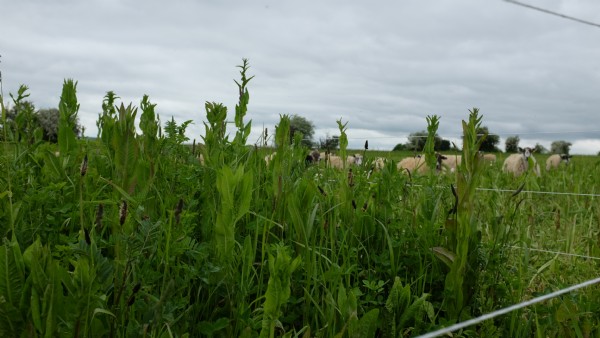

From a farmer’s perspective we can do no better than to quote from Newman Turner one of the great advocates of herbal leys. He described the herbal ley as his “fertiliser merchant, food manufacturer and vet all in one”. This sums up the advantages of the Herbal Ley. Due to the wide range of species included, these leys are very different from the rest.
What is a Herbal Ley?
A herbal ley contains a diverse range of grasses, herbs and clovers. It produces well-balanced forage and not just large volumes of grass. Many of the species used are deep-rooting and have the ability to unlock resources from deep in the soil profile. The herbal mixture does not demand high fertiliser inputs and should provide increased levels of minerals and vitamins to livestock. Also, if herbal leys are grown for around four years, they will substantially improve soil fertility and structure with their deep roots.
Why use a Herbal Ley?
Herbal leys are an excellent source of forage, providing very good animal performance in terms of liveweight gain and milk production as well as providing a healthy, wholesome and nutritionally-balanced natural feed. Of equal importance is the ability of the herbal ley to simultaneously build and restore soil fertility. All grass leys build humus and fertility, but these are the best with really deep, penetrating roots.
Herbal v. Conventional Leys
Leys have long been regarded as the most economical and natural source of food for livestock production. The trend in recent decades for simplistic mixtures, perhaps with just one or two grasses and often without clover, is being challenged by the increasing use of more diverse combinations. Herbal leys are deliberately complex which increases the initial cost of the seed mixture. However, this is offset by improved animal performance and health.
Sowing and Establishment
Ideally these leys should be sown after an application of manure. This can be in the form of FYM or a green manure. Manures increase microbial activity in the soil leading to greater quantities of plant nutrients being available to the new seedlings. These leys contain many small-seeded species and are best shallow-sown into a very well worked seedbed. Broadcasting is preferable to drilling as this leads to more even plant distribution. Once sown, the seed should be rolled immediately to ensure good soil-toseed contact. Sowings should be made from March until mid September. Later sowings should be postponed till Spring.
Chicory Ley
We have heard from some of you that a mixture of chicory and clover can be effectively used to fatten lambs. Live weight gains are in the region of 250 grams per day and chicory is a valuable natural anthelmintic (antiworm), although it needs to be fed at very high levels to be totally effective. This ley can be expected to last for three or four years. Please let us know your experiences with this ley.
Date Posted: 29th March 2017



